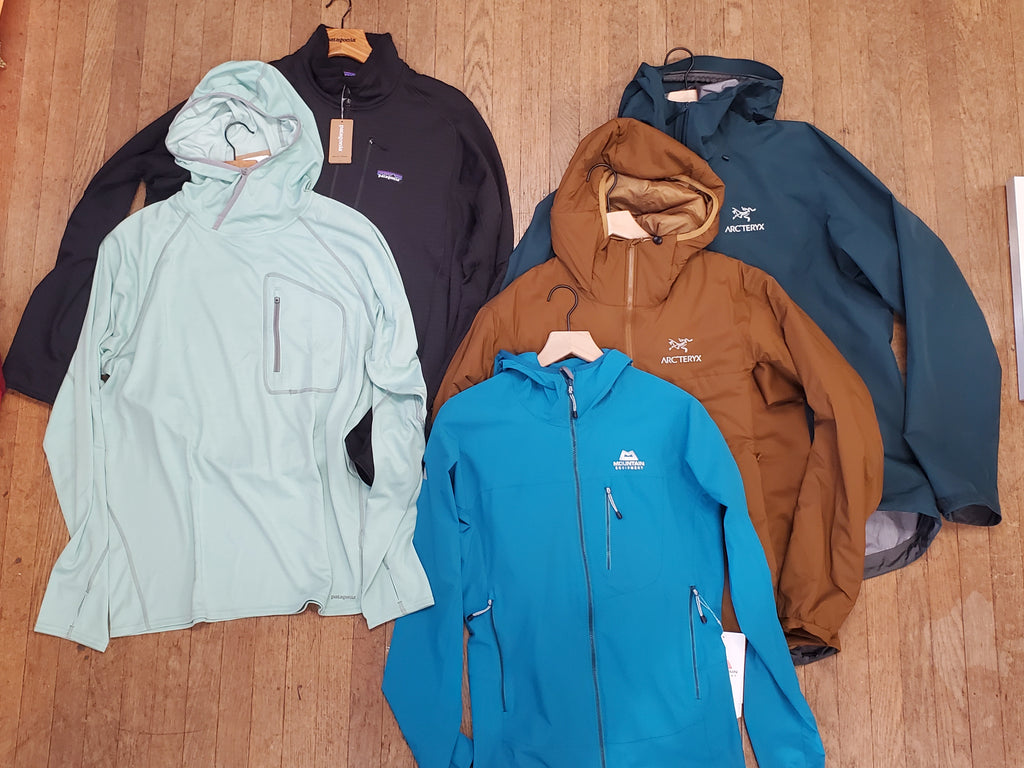
An Intro to The Layering System
The key to comfort and ultimately the success and safety of any backcountry outing comes down to having the right clothing to keep you protected from the elements, as well as keep your body at a comfortable temperature. The human body has a narrow temperature range that it needs to stay within to work at its optimum level. If it gets too cold or too hot, its efficiency decreases and ultimately hypothermia or over heating and sweating can become a problem. At the very least, if you become uncomfortable due to an inadequate body temp, you will lose focus on the task at hand. If you are overheating slightly you might become a little agitated. If you start getting a cold torso, then your body naturally draws blood form the extremities, meaning you will start to lose the feeling in the hands and feet, which is not good when you are relying on that motor function to keep you safe. Having the correct clothing means that all of the individual components have the ability to work with one another in some sort of a system. This system is based on the layering or stripping of clothing dependent on the weather, temperature, amount of exertion, and personal physiology. The goal of a layering system is to have enough clothing to stay comfortable in the worst conditions that you might encounter on a trip, without having extra, or redundant items that may not get used, or will simply weigh your pack down.
In this article we will briefly cover a 5-layer system that can be used year round with minimal additions or subtractions to custom tailor for warmer or colder weather. We prefer the 5-layer system over a more generic 3-layer system because you have way more versatility. To put that into perspective, with a 3 layer system you have 9 possible layer combinations. With a 5-layer system you have 25. This allows for a way bigger spectrum of proficiently adapting to your environment. These 5 layers all serve a specific purpose, and when combined or subtracted, can accomplish a whole separate purpose.
The 5-Layer System
1. Moisture Management Base Layer
2. Active Insulation
3. Soft-shell/Windbreaker
4. Passive Insulation
5. Hard-shell
Moisture Management Base Layer
Purpose:
1. The base layer is worn next to the skin and is responsible for wicking excess moisture away via capillary action. By transferring moisture away from your skin, evaporative cooling on the skin is minimized, allowing you to stay warmer in cool conditions.
2. Protect the skin from UV light. (Sunburn, Aging, Cancer)
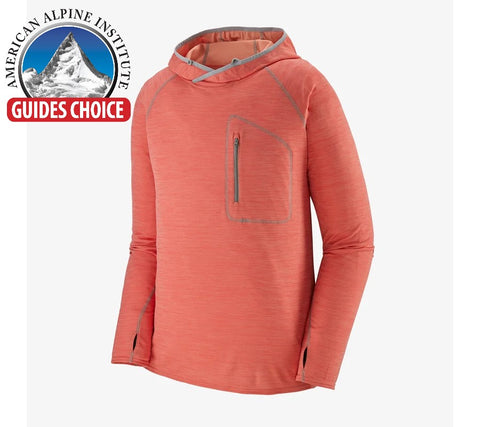

This layer never really changes in the sense that it always stays on, it is the foundation. At least for the top, where more perspiration occurs. Bottoms can be nice to have when you aren't moving, such as at camp and while sleeping. They aren't that great for movement because they aren't versatile. If you are too hot, you can't really de-layer without giving everyone a show.
Clothing is a much more effective at protecting from UV light than sunscreen is, so definitely make sure whatever you get is UPF (Ultraviolet Protection Factor) rated. The more the better, UPF 50 is said to block out 98% of UV light. Why is this important? Because it is actually UV light that gives you sun burns and potentially gives you skin cancer. That is why you can still get sunburnt on an overcast day. There are three types of UV light, UVA, UVB, and UVC. UVC are very strong but short length, so luckily they do not reach earth. UVB gets dealt with quite a bit by our magnetic field, but they still get through and these will effect the surface of the skin but do not penetrate. These are what give you sunburns. Then the UVA are longer length, but not as strong. These will actually penetrate the skin and cause aging and potentially cancer. Since they are not that strong though, these things take some time to evolve. That is why we want to be proactive about our sun protection. A sun hoody is the go to piece for mountain activities, this gives you full long sleeve coverage, along with a hood that can go over a helmet as well.
Base layers will be made from merino wool or synthetic fabrics. Cotton is not an option for a base layer as it does not dry readily and will increase evaporative cooling at the skin level when wet. Merino wool tends to insulate better than synthetic blends, but dries slower, and is less durable over time. Synthetic fabrics will dry more quickly and are more durable than wool, but tend to hold smells more. Base layers must be protected from the elements as they do not shed rain or snow and do not block against the wind. On hot days, light colors will reflect more sun minimizing solar absorption, thus feeling cooler. Darker colors will absorb more sun feeling warmer on cooler days.
Active Insulation
Purpose:
1. Provide additional warmth, but not so much that you will overheat.
2. Must be breathable to be used actively.


Let's talk breathability! Breathability is all about a fabric's ability to let perspiration from the body escape, it has nothing to do with letting stuff in. There is a balance with breathability, generally, when something is more 'resistant' or 'proof' at not letting wind or precipitation in, it is not going to be as breathable. Something that breathes really well is not going to be very weather 'resistant' or 'proof'. That is the give and take there, so watch out for those marketing schemes out there. For this specific piece we want max breathability.
Lightweight gridded fleece or lightweight synthetically insulated jackets with a breathable fabric are good choices for this piece. Down is not recommended for this layer as down does not insulate when it is wet, and the perspiration from your body will move through the jacket and wet the down. Also most down jackets are made with a protective (less breathable) face fabric to protect the down from getting wet from the outside.
Since this layer is not that weather 'resistant', adding a soft-shell or windbreaker can fix that. So why not just get an insulation jacket with a weather 'resistant' face fabric you ask? Sure it might seem simpler in the instance of needed slightly more insulation and something to cut the wind, but then if there is no wind and you need some additional warmth while you are moving, you now have a jacket that doesn't breathe as well, and you will most likely overheat. Then if you only need a jacket to cut the wind, but don't necessarily need the insulation, now you are stuck with the insulation and are most likely going to overheat. Well I can just bring another windbreaker jacket with me you say? Well yes that is true, but now you are bringing a redundant item, something extra that could have been avoided with the right set up to begin with. This is an example of the whole point to this layering system. Versatile, yet nothing more than you need.
Soft-shells or Windbreaker
Purpose:
Soft-shell
1. Act as an versatile 'action layer'. Meaning that this piece has a nice balance of breathability and weather 'resistance', on top of being stretchy and not movement restricting, so you can wear it in a variety of scenarios where you do not have to stop and de-layer constantly.
Windbreaker
1. Act as a very lightweight and packable wind resistant layer.

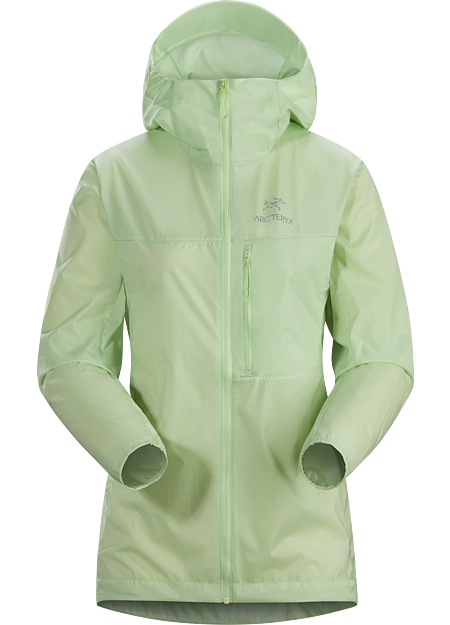
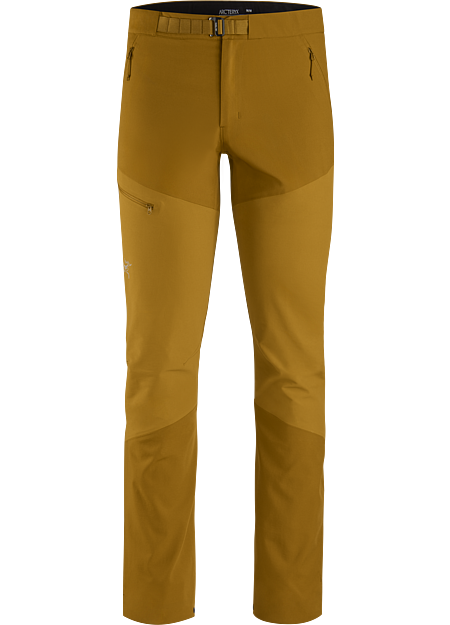
So how are soft-shells so versatile? Well let's go through an example; say you are climbing Mt. Baker here in the Cascades. You kicking a** and making great time. As you gain more altitude, maybe a breeze starts kicking up, so you put on a soft-shell jacket. Maybe you move a little further up and find that the wind is gone, but you still feel comfortable in the soft-shell so you keep moving. As you get higher and on more exposed terrain the wind starts kicking up again, but it is still manageable in the soft-shell, so you keep moving. Where if you didn't have a layer like that, you most likely would have to stop and re-layer every time the wind picked up and stopped. That time adds up. An even better example is if you are in exposed terrain and there is no spot to really re-layer, you want to be in that versatile piece to be able to cruise through there in comfort.
The soft-shell jacket is also really good at shaking off light precip. Which small bouts of light (or heavy) precip is common here in the Cascades. It is important to understand that your body is an incredibly efficient heater when exerting a lot of exercise. If you are actively moving, the heat generated from your body will actually dry out your soft-shell jacket. Because the soft-shell has decent breathability, and is also very thin, it does not take long to dry out when you are moving. So some light rain comes in, maybe your jacket and pants get a bit wet, if you are moving, no problem they will be dry fairly quick. Granted there is a line to this working and in certain conditions the waterproof layers have to come out. With that I hope that is kind of comes together here and you can see why this can be such an effective layer.
As far as the lightweight windbreaker, there are some caveats there. So the benefits you get from those are they are extremely light and extremely packable, and they will be more wind resistant than a soft-shell jacket for the most part. But like we discussed earlier with the breathability spectrum, because of this they will not be as breathable, therefore not as versatile as a soft-shell jacket. Where these excel is for cutting the wind when you are not as mobile. One example of this is belaying during climbing.
The soft-shell pants are a must! You will be wearing these constantly. A lot of soft-shell pants now a days will be UPF rated.
Soft-shell pants and jackets come in many different thicknesses and weights. If you are primarily going to be backcountry skiing in the winter, a thicker soft-shell will provide more warmth and weather protection. If summer-time mountaineering and alpine climbing is more your flavor, a thinner soft-shell will keep you from overheating, but still will provide adequate protection from wind and light precipitation. Materials in soft-shell can be a stretch-woven material, or a light windproof outer layer with a hung wicking inner liner. Most thicker, warmer soft-shells will have a light brushed layer on the interior while thinner soft-shells generally do not.
Passive Insulation
Purpose:
1. Offer sufficient insulation to cover your "worst-case" scenario.
2. Have a more weather 'resistant' or 'proof' face fabric in order to keep the heat sealed in.
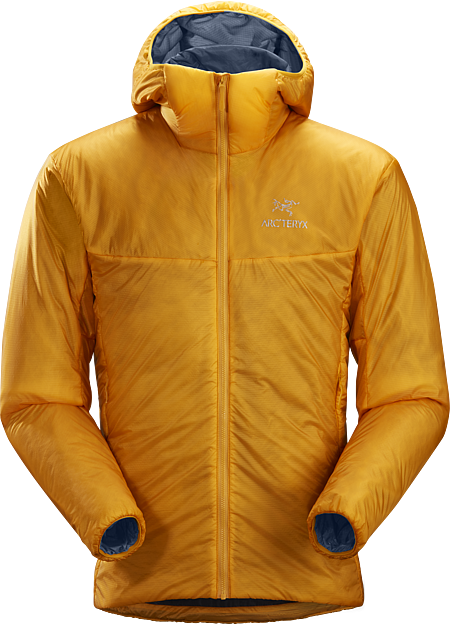
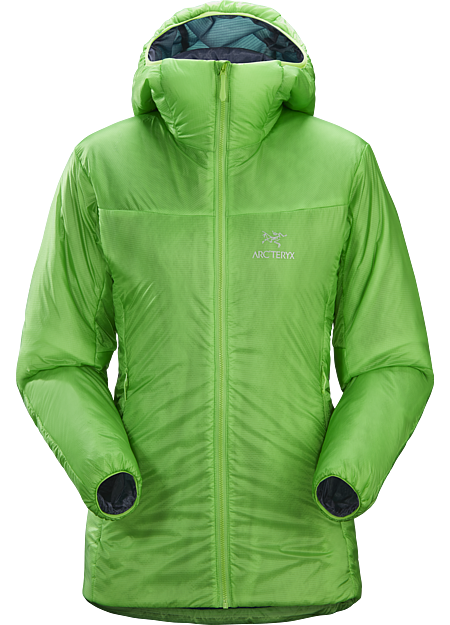
The insulated jacket is the part of the layering system that when you put it on, you will instantly feel warm and cozy. The best type of fill for an insulated jacket will vary depending on where you are climbing, and what type of weather conditions you may encounter. It should be noted, that this layering system can allow for a lighter insulation jacket, due to the other layers that you can implement. For example, if I have a synthetic insulated passive jacket with an insulation weight of 60g/m2, and I wear my active insulation jacket at 40g/m2, then both of those together equal 100g/m2, which is pretty warm and can cover a lot of bases.
If cold (below freezing) or dry conditions are what you expect, then goose, or duck down fill will be ideal. Down provides the best warmth to weight ratio, but does not insulate well if it becomes damp. For cool (freezing and above) or damp conditions, a synthetic fill will be best suited since dampness affects synthetic insulation less than down, allowing heat to be retained even when wet. In cold environments it is not uncommon to wear your insulated jacket on top of all of your other upper layers, so this belay jacket style insulated jacket will need to be oversized to fit comfortably and preferably have a more durable outer fabric to take the wear and tear. For times when moisture is a concern, the insulated jacket should be able to fit comfortably under your shell layer to protect it from getting wet. The weight and thickness of insulated jackets vary widely. You will want to choose the weight and thickness that will be the most versatile to you throughout the year.
To add to the sizing, again this layering system is here to cover my 'worst-case' scenario, which most of the time will be very cold and stormy conditions. For the most part you want to size the insulation jacket to fit comfortably over your first 3 layers, and then the shell jacket should fit comfortably over all the other layers.
Hard-shells 'Waterproofs'
Purpose:
1. Protect from precipitation and high winds
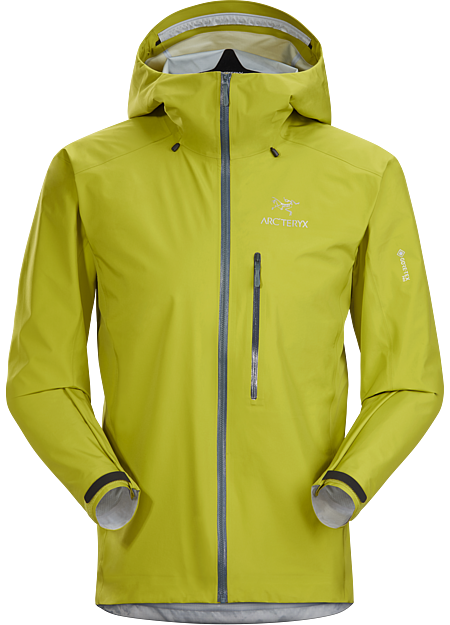

Waterproof shells come in many thicknesses and weights. These should also be non-insulated. If you need insulation you just use one of your other layers. Insulated hard-shells just add weight and negate versatility. Now it should be a goal to go as light as you can go with the weight, but you also need your bases covered for what conditions you are entering. More severe conditions merit a more effective shell jacket, where if I am just doing a day trip with a sunny forecast, I just want a lightweight emergency shell.
Here in the Cascades conditions tend to be wet for a big part of the year, so we definitely recommend at least 3 layer construction for the hard-shells. A lot of generic 3 layer jackets with proprietary waterproof membranes work well for most things. Currently Gore-Tex Pro offers the best protection on the market, but it is more expensive, bulkier, and heavier. This membrane was initially designed for professionals who have to go out in the rain and stay in the rain for a long time. If you know you are going to be out in rainy conditions, or just want the best protection then this membrane should be considered.
These membranes work on pressure, both on waterproofness and breathability. The jackets get a waterproofness rating based on how much water pressure it takes to seep through the jacket. So a shell that is rated to 20,000mm, that means it took 20,000mm of water put in about a 1"x1" tube to seep through the jacket. To be considered waterproof a jacket must have a minimum of 10,000mm.
As far as breathability goes, essentially the water vapor pressure that builds up inside the jacket from your exertion, once it is a higher pressure than outside, the water vapor will start to escape the jacket. These shells are pretty useless if it is raining, warm, and humid.
Generally, if you are carrying a heavy pack, it is recommended to have a jacket with at least 20,000mm rating. Due to the pressure of the backpack and straps, those can force water through the jacket.
This layer must fit well and have a helmet compatible hood. Different companies have different fits and ideally you are able to try on jackets from a few different companies.
For the shell pants, again in a climate like the Cascades, 3 layer is recommended. If you will mainly be in relatively drier and cooler areas then 2 or 2.5 layer construction is fine. Full side zips are pretty essential for mountaineering to be able to transition in and out of the pants with boots and crampons still on.
In the end, the perfect layering system is the one that works well for the individual. Each layer's individual purpose stays the same, but different thicknesses, weights, and sizing all become more personal and more relevant to the climate you will be active in. It will take time to really dial in your kit, you have to go out there in different conditions and see how your body responds. Regardless of whether you are a hiker, climber or skier this layering system will be versatile and work well throughout the year in your backcountry travels.
